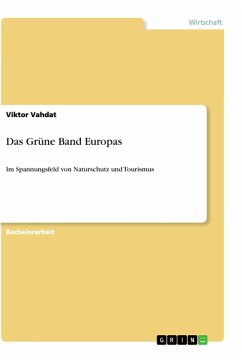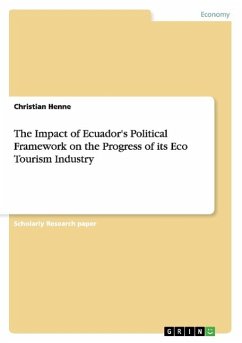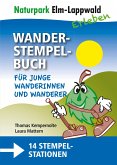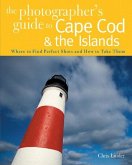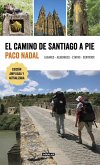Bachelorarbeit aus dem Jahr 2011 im Fachbereich Tourismus - Sonstiges, Note: 1, Universität für Bodenkultur Wien (Institut für Landschaftsentwicklung, Erholungs- und Naturschutzplanung (ILEN)), Sprache: Deutsch, Abstract: This bachelor thesis is about the European Green Belt.The thesis opens with an introduction to the history of the Green Belt, which includes a history of the Iron Curtain and its break-up. This is followed by a general survey of the different sections of the European Green Belt, which are the Fennoscandian, Central European and South Eastern-European sections.The main issue of concern here is the relationship between tourism and nature. It turns out that unpolluted and fully functioning nature are the basis for all different kinds of nature tourism. However, "overusing" nature can lead to its destruction, by literally "loving it to death". For this reason, it is necessary to act in sustainable ways to conserve the nature. Forms of sustainable tourism, such as ecotourism, have therefore been developed. This thesis examines the different forms of ecotourism and discusses the potential impacts of nature- based tourism.Nevertheless, real sustainable tourism is said to be useful for regional development, because it can generate income locally and strengthen regional development. Moreover, it can help increase the acceptance of practices that lead to nature protection and helps to fund future protection activities. However, there are a number of issues to be considered to secure that ecotourism turns out to be really useful for a region.In additional to laying a theoretical basis for studying the role of tourism within the European Green Belt, this thesis also presents examples for how it is used in tourism. The first example is the Prespa- Ohrid region located in the South Eastern European Green Belt, where the land is still recuperating from the impacts of former land use; and where ecotourism - instead of land exploitation - is slowly beingintroduced. The second example is a special case that relates to the entire Green Belt: the Iron Curtain Bicycle Trail.All in all it turns out that only painstakingly planned sustainable forms of tourism can have positive effects on nature, people and economy.
Hinweis: Dieser Artikel kann nur an eine deutsche Lieferadresse ausgeliefert werden.
Hinweis: Dieser Artikel kann nur an eine deutsche Lieferadresse ausgeliefert werden.

